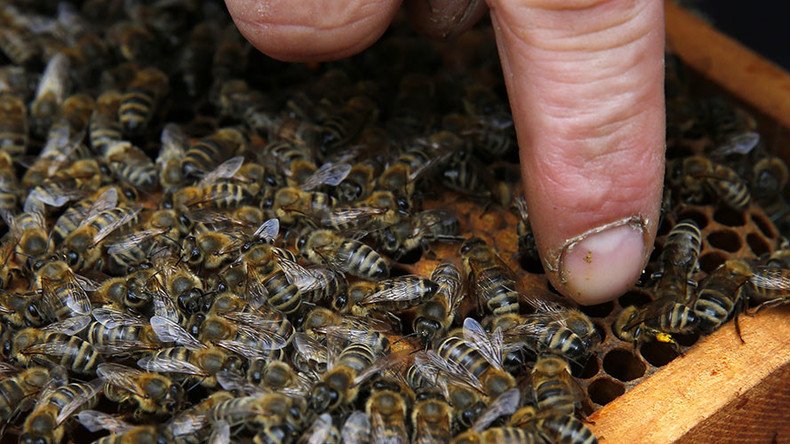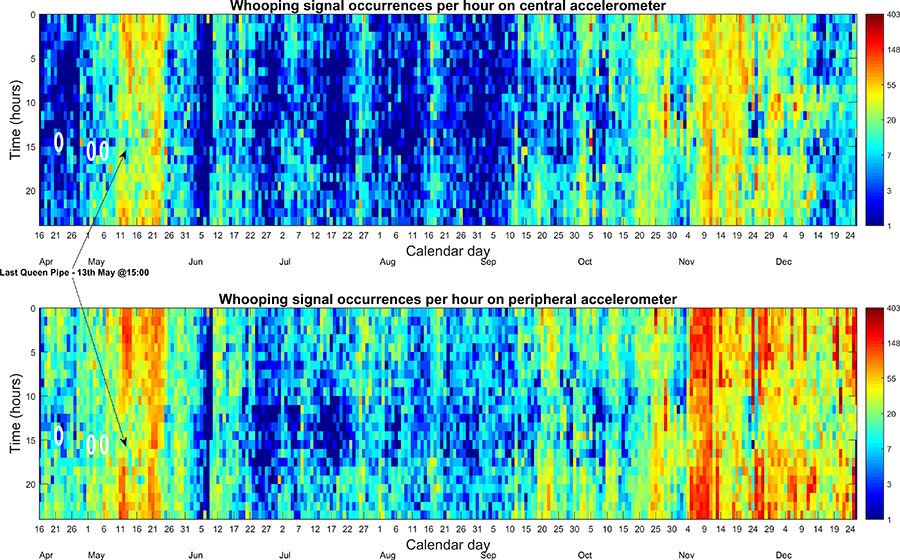Honeybees love to ‘whoop’: Scientists discover vibrational signal is expression of surprise (VIDEO)

Startled after they bump into each other, honeybees emit a vibrational ‘whooping’ pulse, according to newly-published research which has reinterpreted the phenomenon.
Published in PLOS journal, the study led by Martin Bencsik from Nottingham Trent University found that the frequency of the signal called into question previous findings that it’s a request for food or a warning to other bees foraging in a dangerous location.
The observations carried out at two hives, one in the UK and one in France, reveal that the vibration commonly known as the ‘stop signal’ occurs in a variety of contexts and often at nighttime. Scientists also noted a simple knock on the the wooden wall of the hive can garner a collective ‘whoop whoop’ from the bees within.
The ‘whoop’ sound, created when a honeybee vibrates its wing muscles in the honeycomb, can only detected only by accelerometers embedded in the hive and is inaudible to the human ear.
Through observing the recordings, the team discovered the signals were being produced at a rate of around six or seven a minute from just a small area of the honeycomb.

“There’s no way a bee was trying to inhibit another one that frequently, and there’s no way a bee would request food that frequently,” Bencsik told New Scientist.
READ MORE: Serious bees-ness: Pollinator drones could replace endangered insects
“We suggest that, in the majority of instances, it is bees being startled that produce the signal,” said Bencsik who suggests changing the name of the phenomenon to the ‘whooping signal’.
The researchers now want to investigate the pulse when it is associated with a startled response and apply this to an entire colony to assess the extent to which the response changes in the long term.












